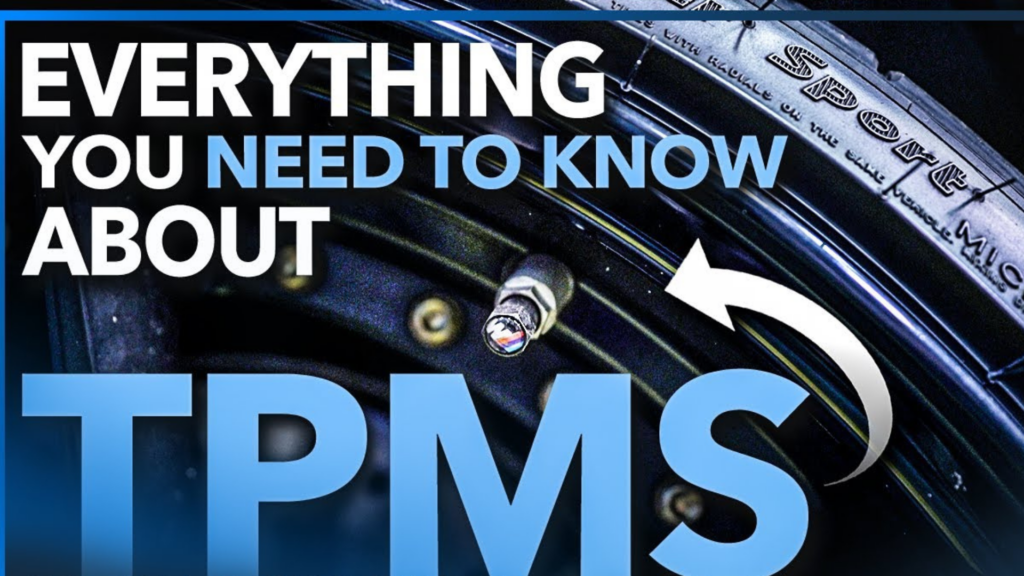Maintaining proper tire pressure is an essential aspect of vehicle safety, fuel efficiency, and tire longevity. With the introduction of the Tire Pressure Monitoring System (TPMS) in modern cars, drivers can now monitor tire pressure conveniently and accurately. In this article, we will discuss Tire Pressure Monitoring in detail, including what it is, how it works, types of TPMS, and its benefits. We will also cover the importance of proper tire pressure and how to check and maintain it.

What is Tire Pressure Monitoring?
Tire Pressure Monitoring System (TPMS) is an electronic system that continuously monitors the air pressure inside a vehicle’s tires. It alerts the driver if there is a significant drop in tire pressure or if the tire pressure exceeds the recommended level. The TPMS typically consists of four sensors, one for each tire, a receiver, and a warning indicator.
How does TPMS work?
The TPMS sensors are installed inside the tires and are powered by a battery. They transmit tire pressure data wirelessly to the receiver, which is located in the car. The receiver analyzes the data and alerts the driver if there is any discrepancy in tire pressure. The warning indicator is typically a dashboard light that illuminates if there is an issue with the tire pressure.
Types of TPMS:
There are two types of TPMS: direct and indirect.
Direct TPMS: This type of TPMS uses pressure sensors installed inside the tire. The sensors transmit the tire pressure data to the receiver, which displays it on the dashboard. Direct TPMS provides accurate and real-time tire pressure readings.
Indirect TPMS: This type of TPMS uses the wheel speed sensors of the anti-lock braking system (ABS) to detect changes in tire pressure. It calculates tire pressure based on the difference in rotational speed between the tires. Indirect TPMS is less accurate than direct TPMS, and it requires calibration every time the tires are rotated or replaced.
Benefits of TPMS:
- Improved Safety: Proper tire pressure is crucial for safe driving. TPMS alerts the driver if the tire pressure is too low, reducing the risk of tire failure and accidents.
- Better Fuel Efficiency: Underinflated tires can reduce fuel efficiency by up to 3%. TPMS helps maintain the recommended tire pressure, which can improve gas mileage and save money.
- Longer Tire Life: Overinflated or underinflated tires can wear out quickly and unevenly. TPMS helps keep the tire pressure at the recommended level, increasing the life of the tires.
Importance of Proper Tire Pressure:
Maintaining the proper tire pressure is essential for vehicle safety and performance. Underinflated tires can cause the following issues:
- Reduced Fuel Efficiency: Under Inflated tires increase the rolling resistance, which can reduce gas mileage and increase fuel consumption.
- Tire Wear: Underinflated tires wear out faster and unevenly, reducing the life of the tire.
- Safety: Underinflated tires can cause tire blowouts, which can result in accidents and injuries.
- Handling: Underinflated tires reduce the stability and handling of the vehicle, making it difficult to control in emergency situations.
How to Check and Maintain Tire Pressure:
- Check tire pressure at least once a month or before a long trip.
- Use a tire pressure gauge to check the pressure in all four tires.
- Inflate the tires to the recommended pressure level listed in the vehicle owner’s manual or on the tire placard.
- Check the tire pressure when the tires are cold, preferably in the morning before driving.
- Rotate the tires every 5,000 to 8,000 miles to ensure even wear.
Tire Pressure Monitoring System (TPMS) is an electronic system that continuously monitors the air pressure inside a vehicle’s tires.
TPMS sensors are installed inside the tires and are powered by a battery. They transmit tire pressure data wirelessly to the receiver, which is located in the car. The receiver analyzes the data and alerts the driver if there is any discrepancy in tire pressure.
There are two types of TPMS: direct and indirect. Direct TPMS uses pressure sensors installed inside the tire while indirect TPMS uses the wheel speed sensors of the anti-lock braking system (ABS) to detect changes in tire pressure.
TPMS improves safety by alerting the driver if the tire pressure is too low, which reduces the risk of tire failure and accidents. It also helps improve fuel efficiency and increases the life of the tires by maintaining the recommended tire pressure.
